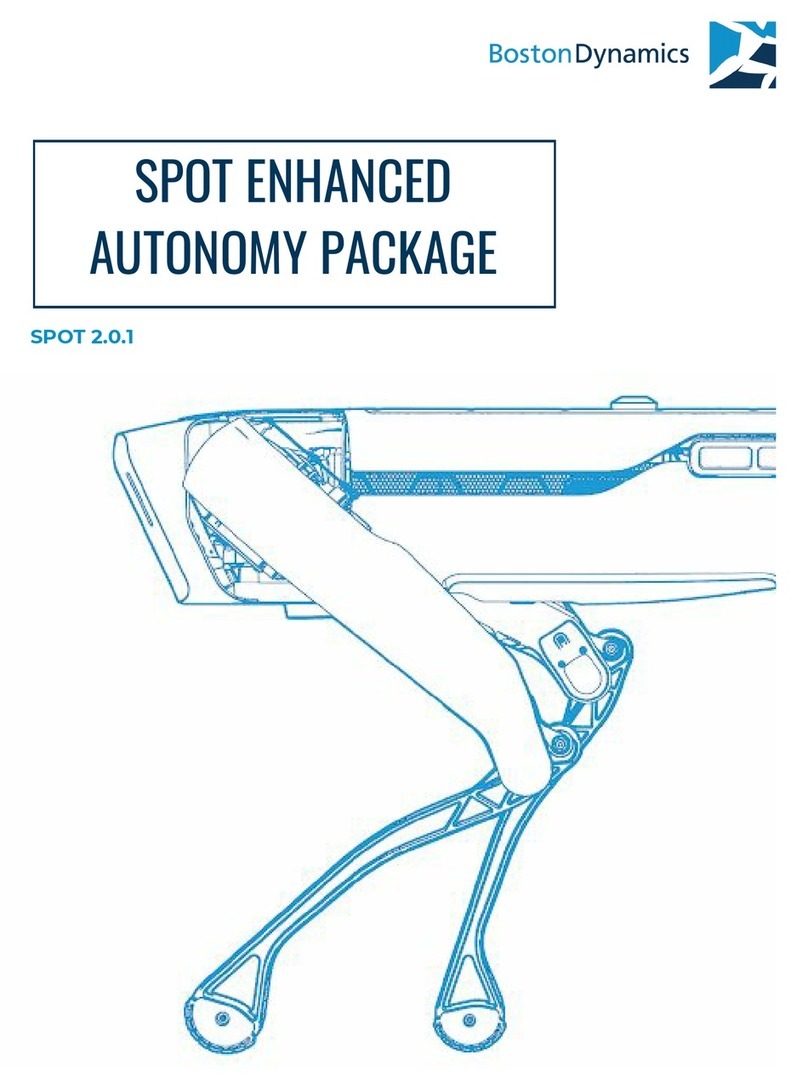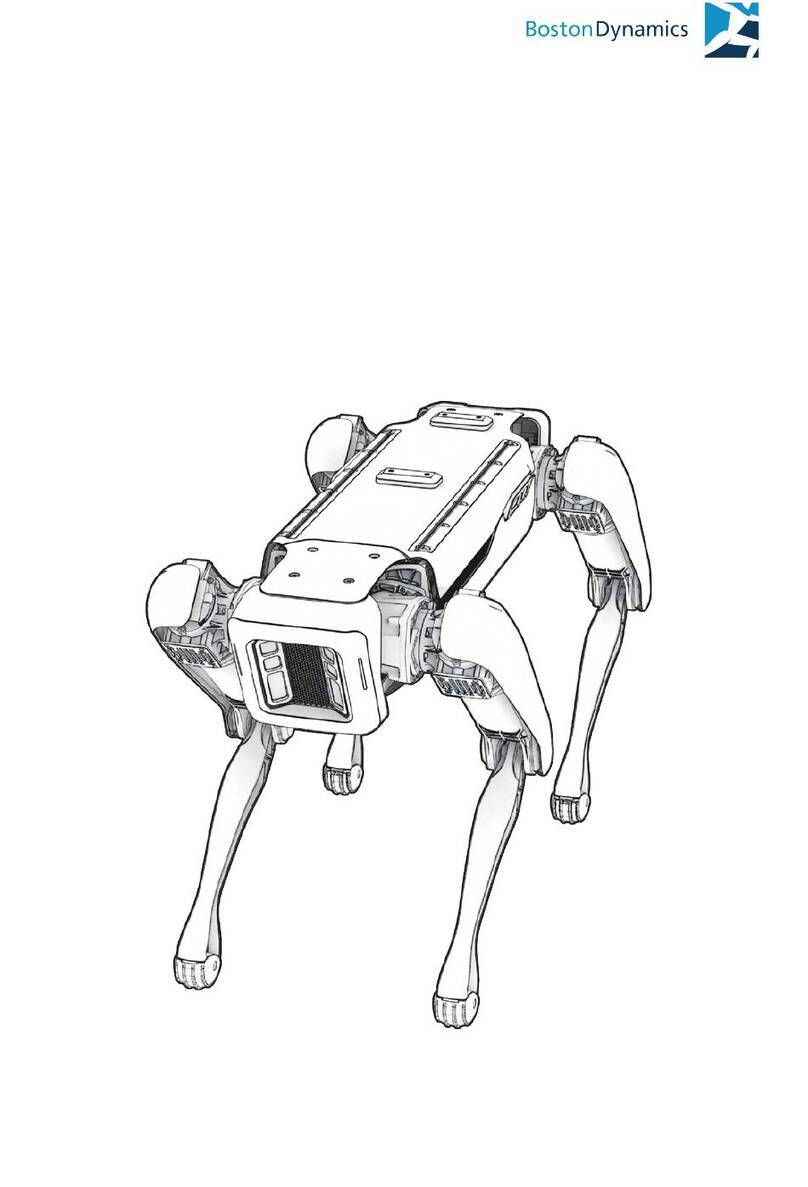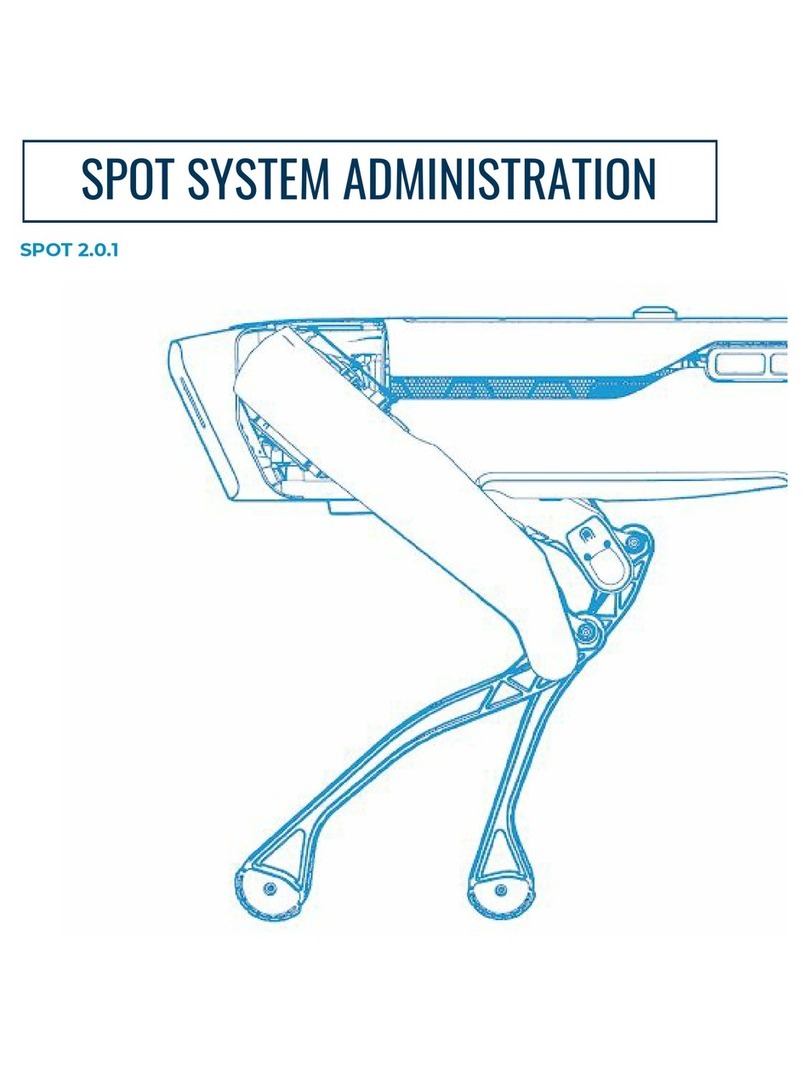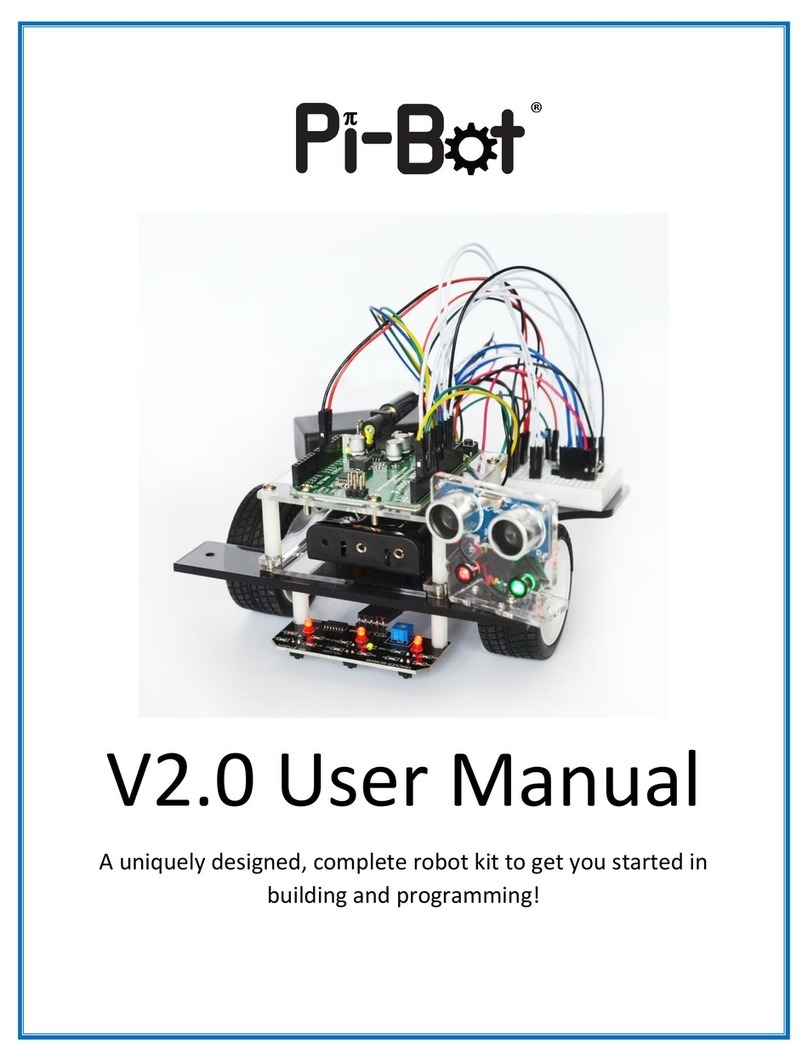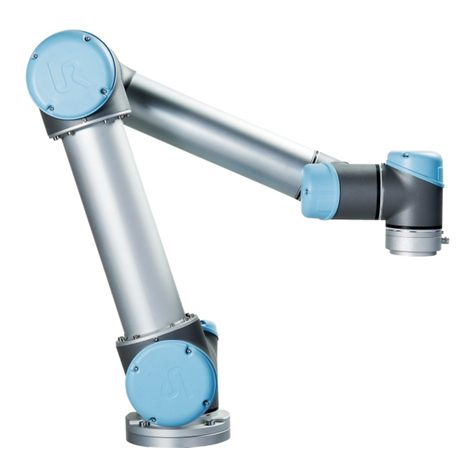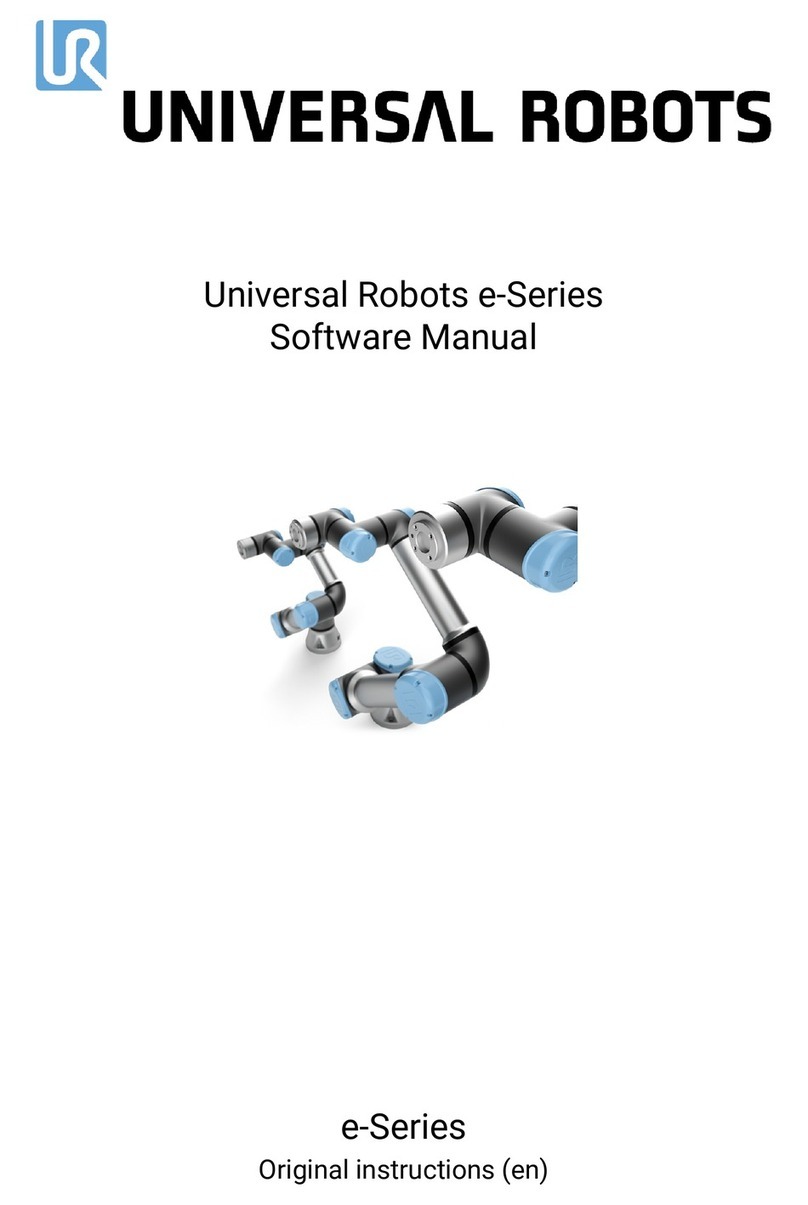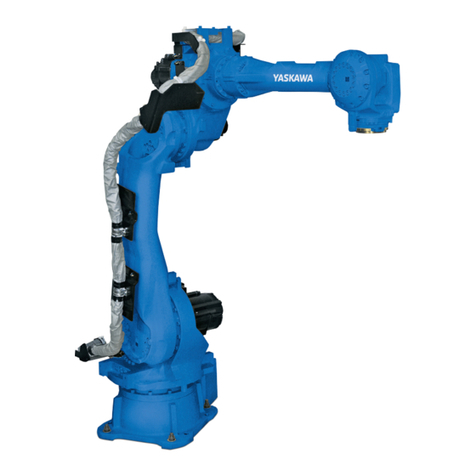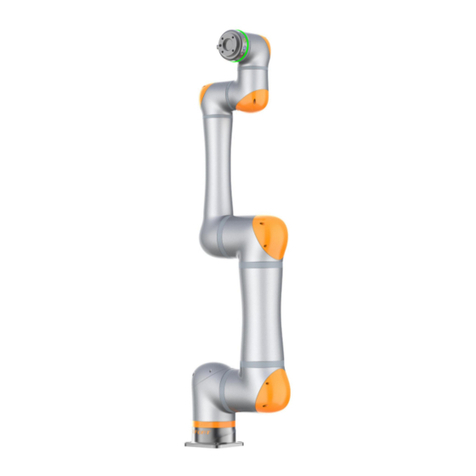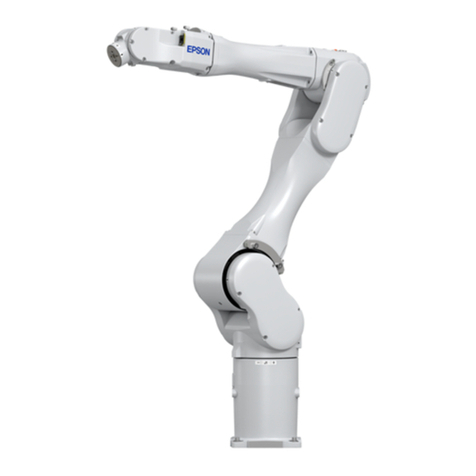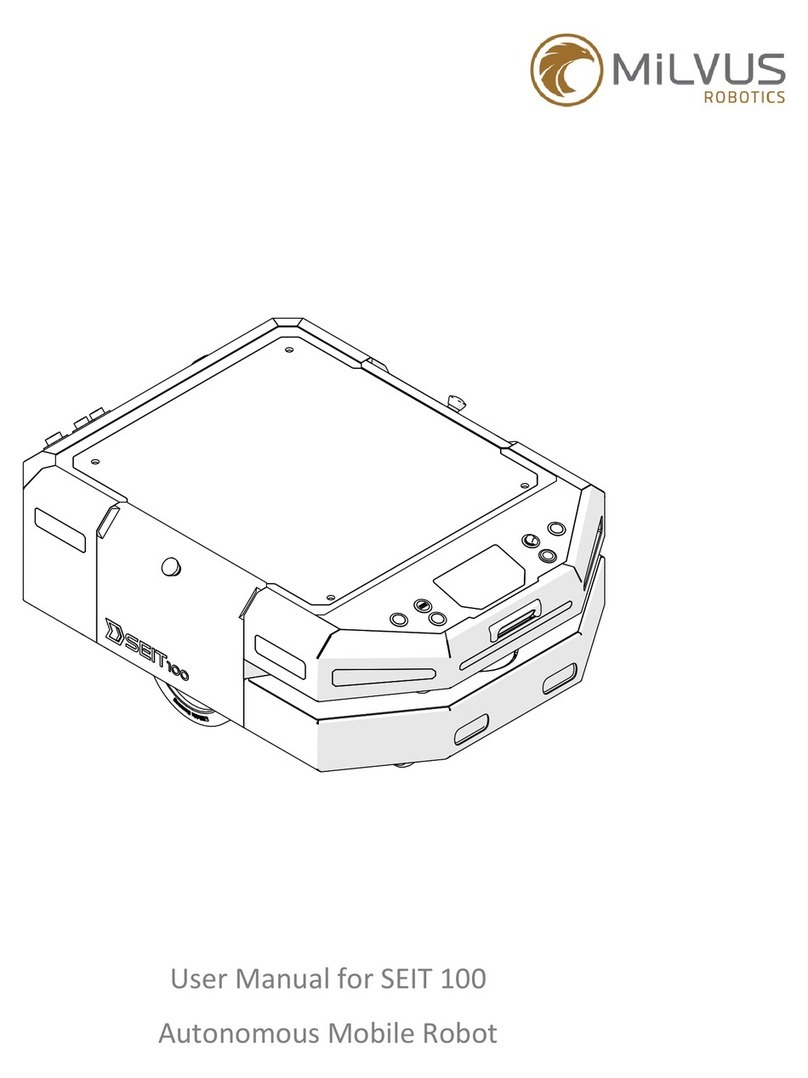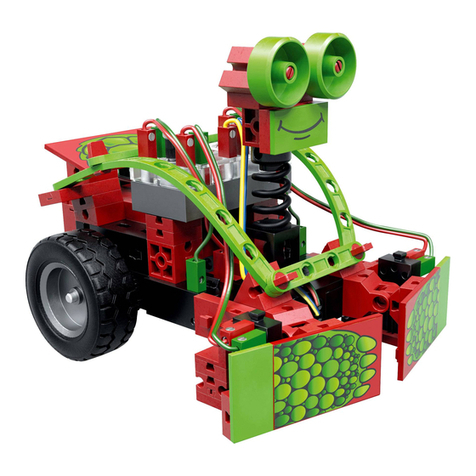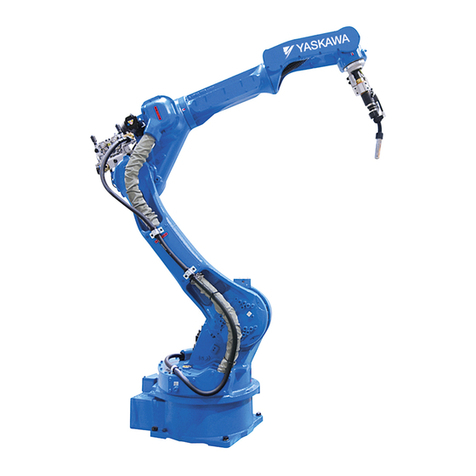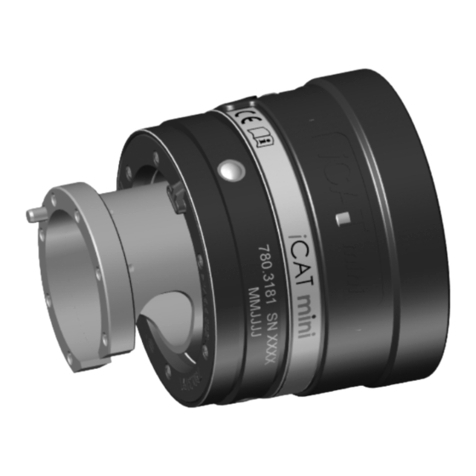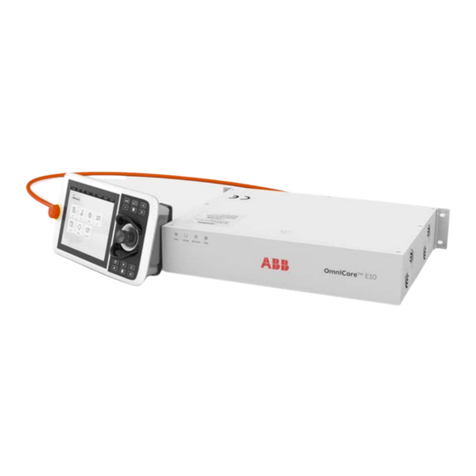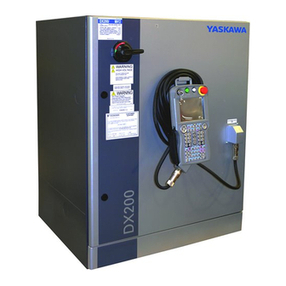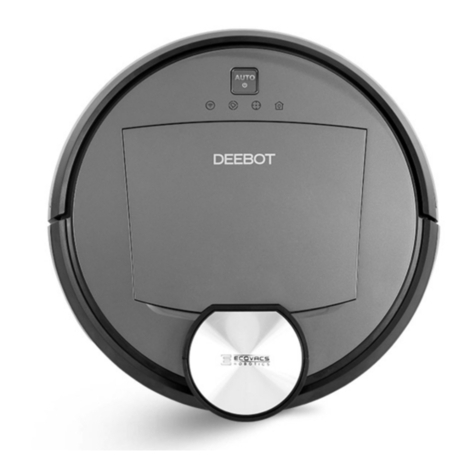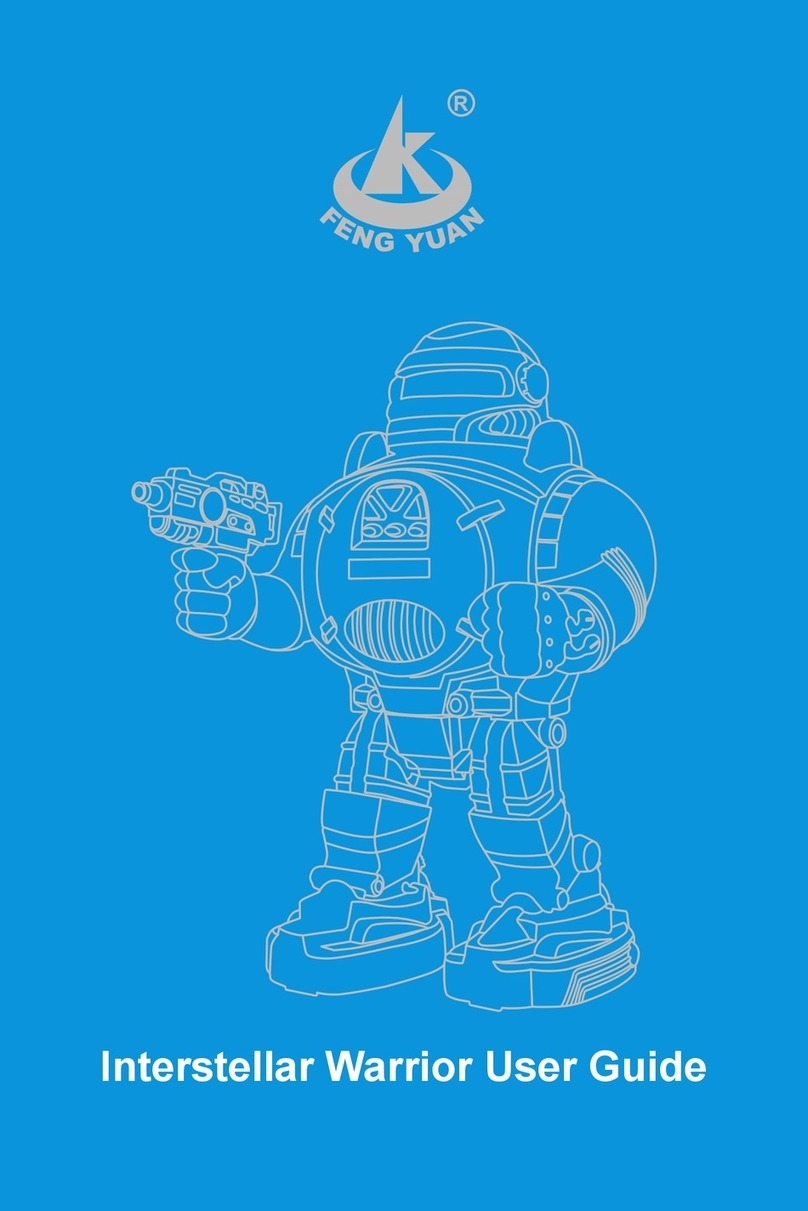
Spot Information for Use v1.1
4
3.3.1 Battery storage ..................................................................................................................................23
4 Installation and commissioning .........................................................24
4.1 Before starting................................................................................................................................. 24
4.2 Preparation ......................................................................................................................................... 24
4.3 Spot robot payloads........................................................................................................................25
4.3.1 Qualification of notable attachments..................................................................................26
4.3.2 Safety-related payloads.................................................................................................................26
4.3.3 Mounting payloads..........................................................................................................................27
4.3.4 Configuring payloads.....................................................................................................................27
4.4 Battery setup and charging ...................................................................................................... 28
5 Use of the machine ....................................................................................30
5.1 Spot controls on the robot ......................................................................................................... 30
5.2 Robot status lights............................................................................................................................31
5.3 Spot tablet controller .....................................................................................................................33
5.4 Starting the robot.............................................................................................................................33
5.5 Modes of operation......................................................................................................................... 34
5.5.1 Obstacle avoidance........................................................................................................................ 34
5.5.2 Navigating stairs ...............................................................................................................................35
5.6 Stopping the robot ..........................................................................................................................36
5.6.1 Manual stop using the controller............................................................................................36
5.6.2 Operational stop ...............................................................................................................................37
5.6.3 Protective stop ...................................................................................................................................37
5.6.4 Starting back up after a stop....................................................................................................40
5.7 Turning off Spot................................................................................................................................40
6 Maintenance ...................................................................................................41
6.1 Cleaning the robot........................................................................................................................... 41
6.2 Spot Dock connector cleaning ................................................................................................. 41
6.3 Recalibration with SpotCheck ................................................................................................. 42


